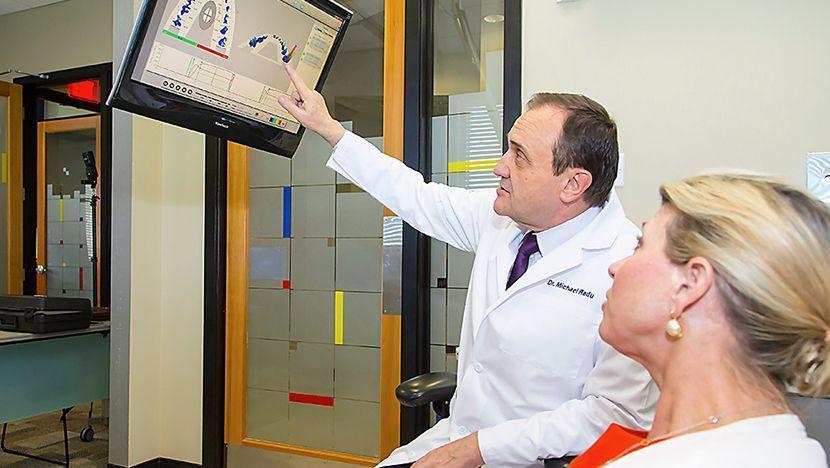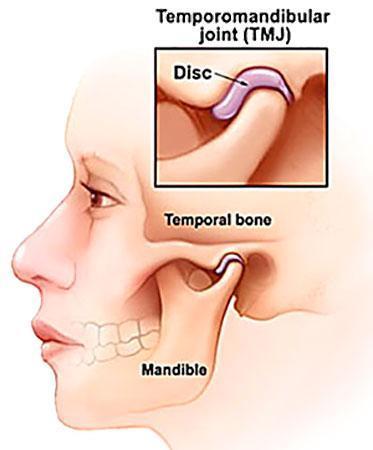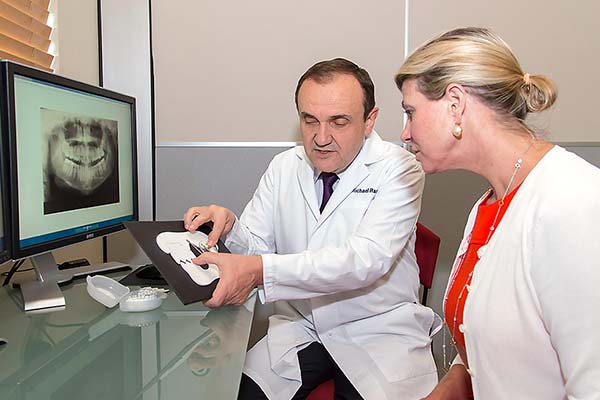TMJ Treatment in Boca Raton

Advanced technology allows us to pinpoint the cause of your TMJ issue and correct it.
Do You Suffer from Jaw Pain or Discomfort?
The human jaw is capable of a tremendous amount of force. When misaligned, it can cause numerous problems. If jaw pain is part of your everyday life, you may have TMJ disorder.
TMJ refers to the temporomandibular joint. This is the place where your lower jaw is hinged to your skull and involves a very powerful set of muscles. When the joint is out of alignment, these muscles can clench involuntarily. This often happens during sleep and can cause discomfort or even lead to gum disease.
Our doctors believe that a correct bite is 50% of dentistry. For this reason, they have made it their business to become highly qualified in handling this problem—Dr. Michael Radu even lectures and teaches about TMJ treatment to other dentists.

Symptoms and Effects of TMJ Disorder
Some of the Symptoms of TMJ Disorder Can Include:
- Clenching or grinding teeth
- Headaches and jaw pain
- Earaches or ringing in the ears
- Jaw that locks up
- Popping or clicking sounds when moving the jaw
Some of the Effects of TMJ Disorder Can Include:
- Notches on the teeth
- Receding gums, exposed roots
- Worn-down, cracked or chipped teeth
- Chronic tooth sensitivity
- Failed dental restorations

Headaches and jaw pain can be a symptom of TMJ disorder.
Causes of TMJ
Some individuals habitually clench or grind their teeth. TMJ disorder can also result from an injury to the mouth or jaw, arthritis in the joint or structural problems present at birth. Missing teeth can cause remaining teeth to shift, altering the bite.
Our doctors are extremely knowledgeable and proficient at equalizing out your bite, no matter the cause of the misalignment.
Solutions for TMJ Disorders
The critical first step in treating a TMJ disorder is an accurate diagnosis of the precise source of the problem. Our doctors customize your TMJ treatment to address the particular origin of your problem. This customization provides long-lasting results efficiently and effectively.
Locating the Source of the Problem
The doctors first do a comprehensive diagnostic exam to detect for a TMJ disorder. They use digital X-rays to see if there is a structural disorder with the bones or disc in the joint. They also take impressions and use a device that precisely measures and records how your upper and lower jaw fit together. Diagnosis includes manually assessing the TMJ while you open and close your mouth, noting how wide you can open, if there is pain or a sound is heard.

The doctors will explain exactly what is occurring with your jaw joint.
High-Tech T-Scan® Testing
Our doctors use the state-of-the-art T-Scan analyzer to diagnose TMJ and optimize your bite. It’s a handheld device that measures relative biting forces. For the patient, using it is as simple as biting down on the sensor. A 3D image is immediately displayed showing the doctor and you precisely where the pressure points are. It shows such factors as which tooth hits first and even where earlier dental restorations, or shifted teeth, may be interfering with your bite alignment.

The T-Scan measures your bite and is a vital part of proper diagnosis.

The 3D image created by the T-Scan software shows exactly how the teeth are coming together and which teeth are touching first.
Balancing Your Bite
Our doctors make the correction of any bite misalignment an integral part of any major dental treatment. This is because they understand the way in which excessive and uneven forces can damage or eventually destroy teeth and previous dental work.
Ways to Treat TMJ Issues
- Nightguards of various designs, based on your diagnosis
- Evening out the bite
- Orthodontic treatment such as clear aligner orthodontic therapy
- Anti-inflammatory medication
- Restoration of the teeth to make a functional bite
Dr. Radu and the American Equilibration Society
Dr. Michael Radu has been an active member of the American Equilibration Society (AES) since 1996. This select group of dental professionals focuses on the bite and related issues such as TMJ disorder, wearing or notching of the teeth and pain of unknown origin in the facial area. He has contributed two poster presentations to the meetings of the AES and now serves as a member in the Scientific Investigation Committee.
He has also authored an article in a major professional journal, Ortodontia e Ortopedia Facial, on the subject.
Call 561-220-0454 or click here to schedule your appointment.



